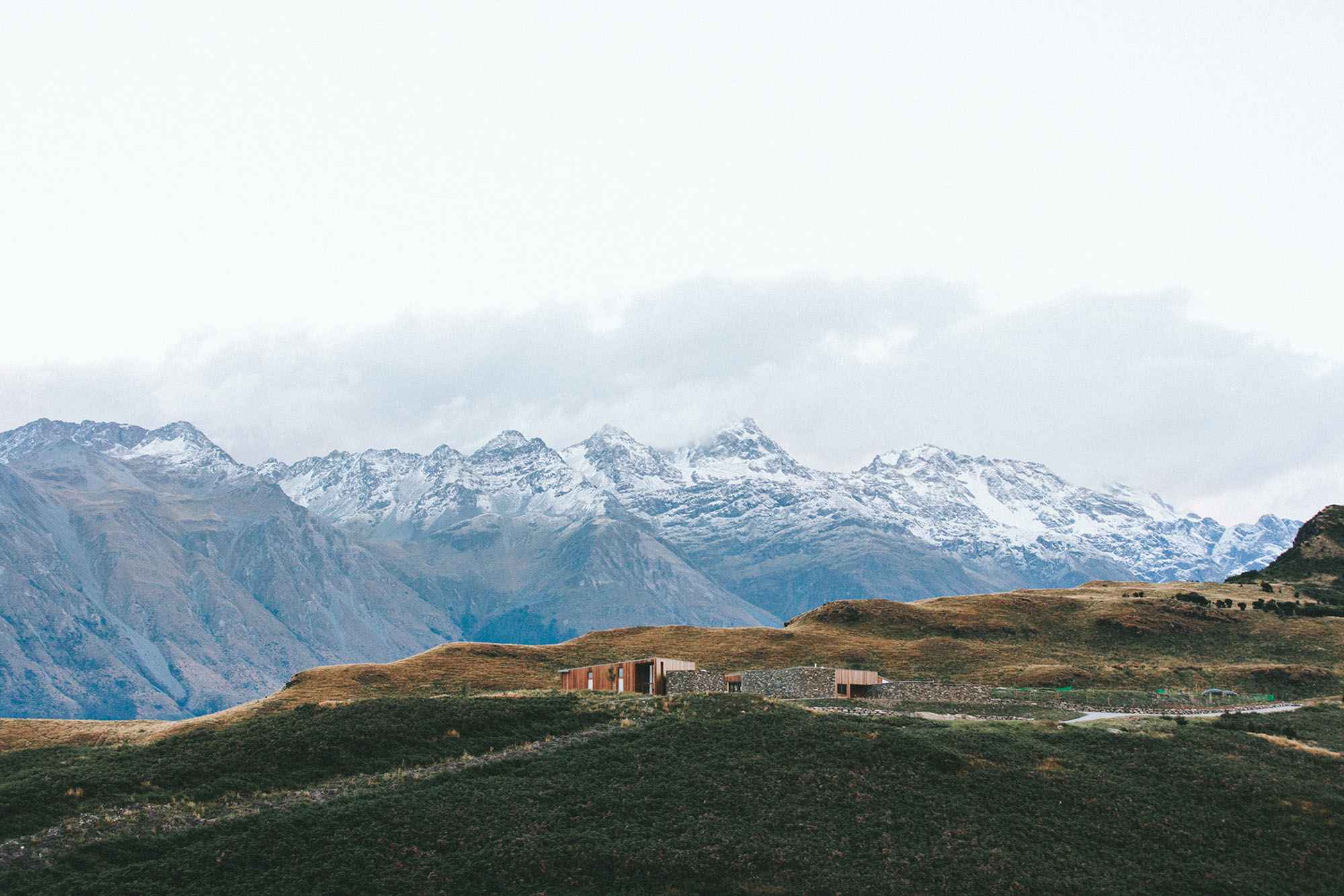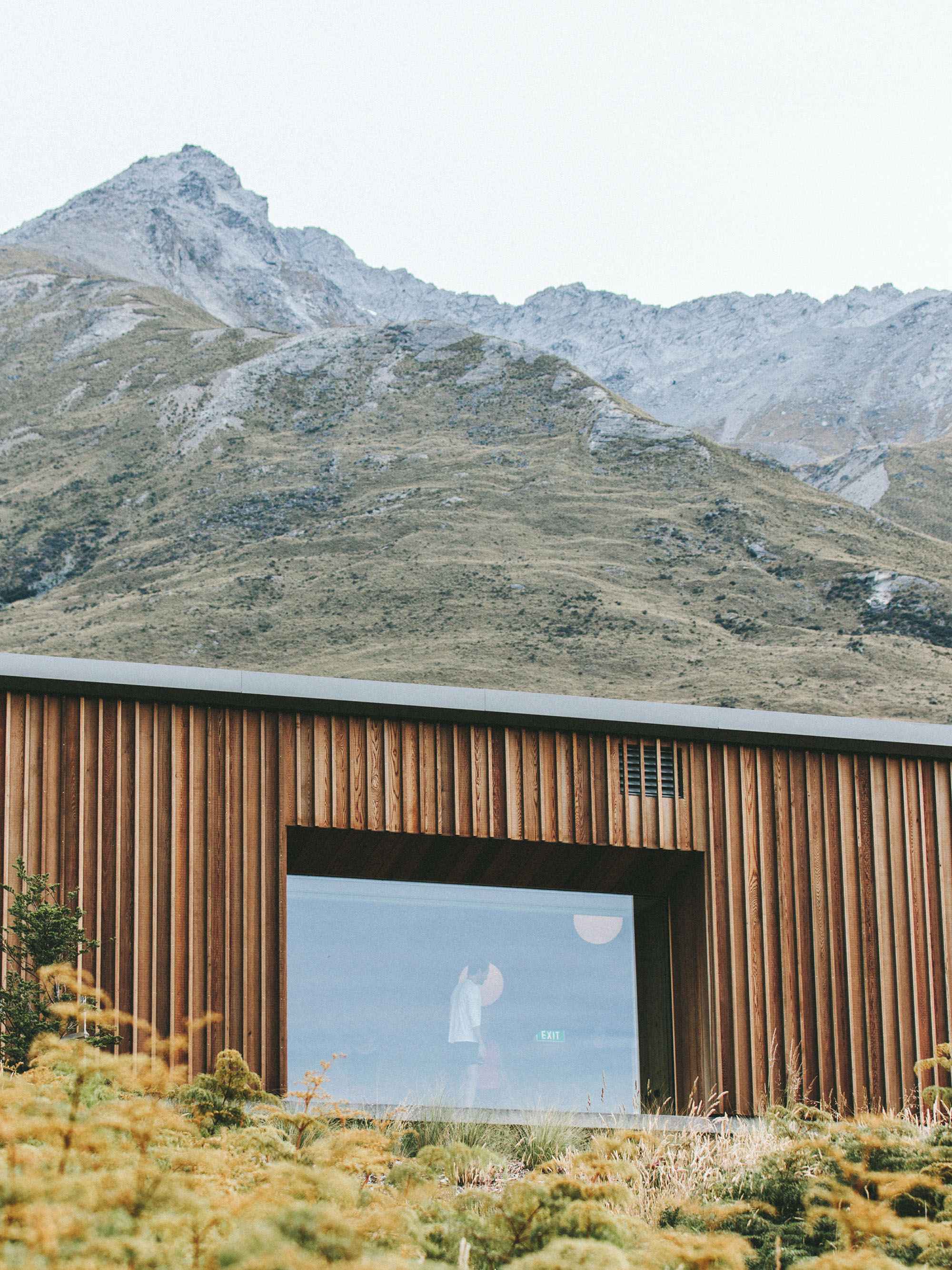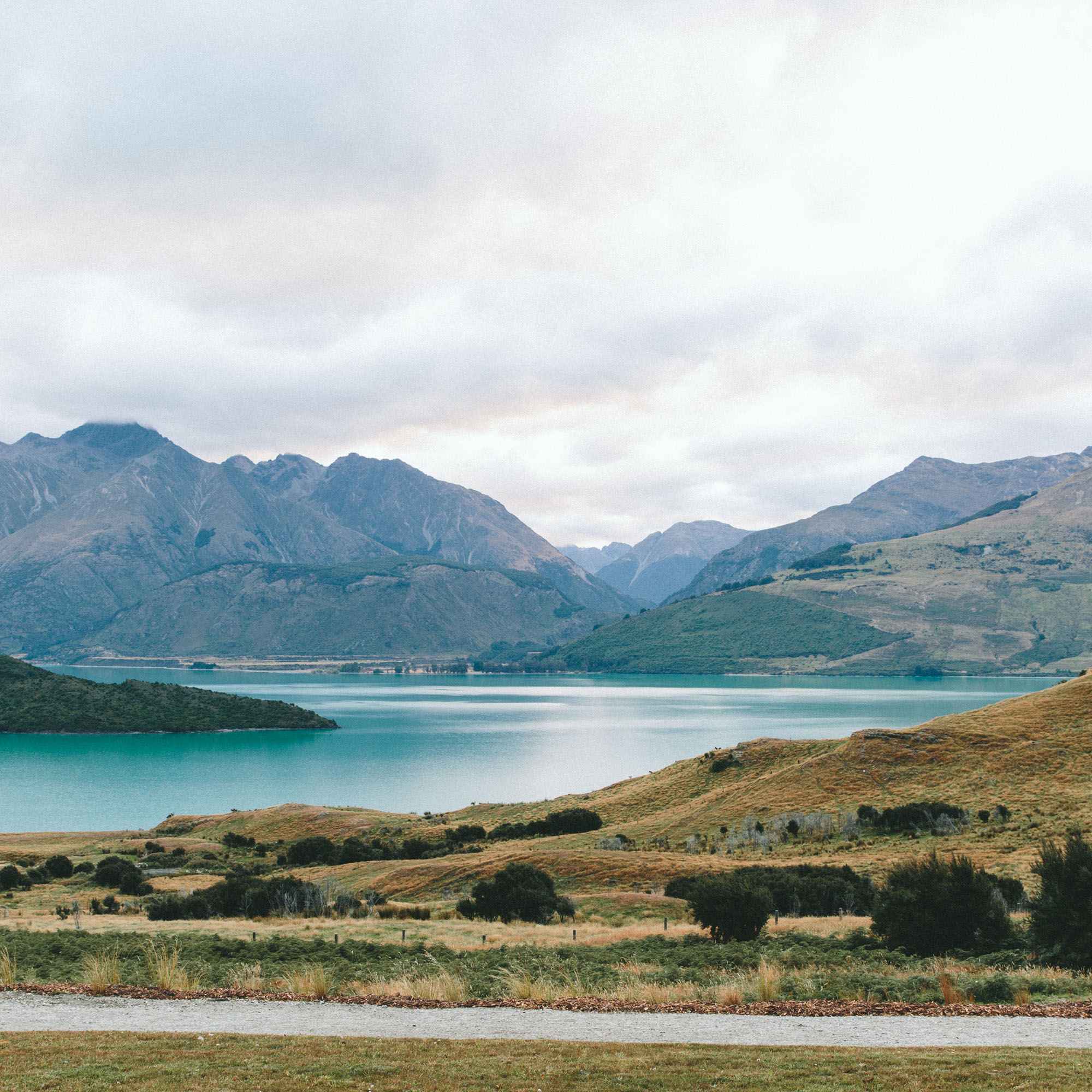
Northern Ecuador: East Slope Andes Tour (Mar 27 - Apr 3, 2027)
Escape to the Ecuadorian Andes
-

Perfect week getaway!
With only 7 days of birding, we aim to find as many unique species as possible. From the Ecuadorian Hillstar and Rufous-bellied Seedsnipe in the High Andes to the ‘San Isidro’ Owl and Coppery-chested Jacamar in the forested slopes of the East.
-

Unforgettable Experiences
Ever wondered what it would be like to see an Andean Condor flying across the Andes or perhaps hearing the alien-like calls of the Wattled Guan in the cloud forest?
-

Great times in good lodges
This trip is as much about good times as it is about the birds. Our quality lodges are all in prime destinations, so the early mornings have us birding right from the moment we leave the door!
East Slope Andes Tour
-
Arrival day for participants via Mariscal Sucre Quito International Airport and a 20-minute transfer to our lodge for the night.
If time allows, we will do some birding around the lodge in the afternoon for some widespread species found around Ecuador’s capital. Some of the species we may encounter include Great Thrush, Hooded Siskin, Golden Grosbeak, along with our first hummingbirds such as Sparkling Violetear, Black-trained Trainbearer, Western Emerald, and our first tanagers like Blue-and-yellow and Scrub Tanager. These two bird families are well represented in Ecuador, and we should encounter a lot of these species during our trip through the East Slope of the Andes.
Night in Zaysant Ecolodge
-
Today we visit to Antisana Ecological Reserve, a beautiful area in the highlands that represents the elevation restricted paramo habitat. This unique habitat makes up for the lack of species by the sheer quality as many of these species are not possible anywhere else on the trip, including Ecuador’s national bird and the largest vulture species in the world, the Andean Condor! The open areas of the paramo will help us find sought-after species like Ecuadorian Hillstar, Andean Ibis, Carunculated Caracara, Chestnut-winged and Stout-billed Cinclodes, Paramo Pipit, and our first antpitta of the trip, the charismatic Tawny Antpitta.
The lakes of the area are also home to a few species we can’t see in lower elevations, such as Andean Teal, Andean Duck, Slate-colored Coot, Silvery Grebe, and Andean Gull; while the feeders at our lunch stop will have us seeing the Giant Hummingbird in proximity, alongside other nectar-loving species like Shining Sunbeam, Great Sapphirewing, and Black Flowerpiercer.
After lunch, we will drive to Papallacta Pass to explore the Papallacta antennas and polylepis forest. Between these two sites, we will try to connect with the odd Rufous-bellied Seedsnipe, a high Andes shorebird that looks and behaves more like ptarmigan than a sandpiper. Other targets include scarce species like Rainbow-mantled Thornbill, Jameson’s Snipe, Red-rumped Bush-Tyrant, Giant Conebill, and Black-backed Bush-Tanager. We will also scan the hillsides in hopes of finding one of South America’s most unique mammals, the Spectacled Bear, the only living member of the short-faced bears and one of the largest creatures in the continent.
Night in Guango Lodge
-
Birding the trails and feeders of the Guango Lodge are a dream for any birder in the region, and we will spend as much time as possible to find many of the specialties of the area. Some standout species in the trails include Mountain Avocetbill, Andean Potoo, Gray-breasted Mountain-Toucan, Powerful and Crimson-mantled Woodpecker, Montane Woodcreeper, Flammulated Treehunter, Barred Fruiteater, Dusky Piha, Plain-tailed Wren, and Black-crested Warbler; one of the trails leads to the Quijos River, where White-capped Dipper, Fasciated Tiger-Heron and Torrent Duck will have our full focus.
Finally, we have the feeders, in the hummingbird stations, Tourmaline Sunangel, Speckled Hummingbird, Glowing Puffleg, Chestnut-breasted Coronet, Gorgeted Woodstar and the outlandish Sword-billed Hummingbird are among the standout species. While the seed and fruit feeders bring about a different suite of birds including Turquoise Jay, Northern Slaty and Pale-naped Brushfinch, Mountain (Golden-shouldered) Cacique, Grass-green, Hooded Mountain, Buff-breasted Mountain and Lacrimose Mountain Tanager, Capped Conebill and Gray-hooded Bush Tanager.
After lunch, we will have a 3-hour drive towards our base for the next 3 nights; those with some extra energy will be given the first chance to do some owling for the trip as up to four owl species are regularly reported in the lodge grounds.
Night in WildSumaco Lodge
-
Located on the foothills of the Eastern Andes, the forests of WildSumaco are the definition of birding extremes as birds from Amazonia come to their upper elevation limits, while those of the cloud forest reach their lowest points, and adding on top, a whole set of unique species only found in this elevation make the area a site with over 600 reported bird species. Starting from the veranda, Military and Chestnut-fronted Macaw are regularly seen flying through the canopy, while Chestnut-tipped and Golden-collared Toucanet, Many-banded Aracari, Andean Cock-of-the-rock and Amazonian Umbrellabird regularly visit the fruiting trees around the lodge. However, if you asked birders what amazes them the most about the veranda, then two words will always be said: hummingbird feeders, over 30 different species are reported from these stations, with standouts like Gould’s Jewelfront, Napo Sabrewing, White-tipped Sicklebill, Peruvian Racket-tail, Black-throated Brilliant, Rufous-vented Whitetip, Golden-tailed Sapphire, Many-spotted Hummingbird, Ecuadorian Piedtail and Wire-crested Thorntail being regulars.
Stepping into the trails might be difficult with so much to see by the entrance, but once you do, a different set of targets become possible as the whistles of the rare Black Tinamou are heard from the understory, high in the canopy the alien-like calls of the Wattled Guan give away their location. The true charm of this forest, is the number of legendary species that are regularly seen, these include White-chested and Black-streaked Puffbird, Coppery-chested Jacamar, Lafresnaye’s Piculet, Buckley’s Forest-Falcon, Lined Antshrike, Foothill Stiplethroat, Western Fire-eye, Chestnut-crowned Gnateater, Black-billed Treehunter, Blue-rumped and Striolated Manakin, Scarlet-breasted and Fiery-throated Fruiteater, Gray-tailed Piha, Wing-banded, Gray-mantled and Musician Wren, Golden-eared, Green-and-gold, Orange-eared and Yellow-bellied Tanager, and Deep-blue Flowerpiercer. However, if luck is really on our side, we might encounter some of the forest ghosts with Crimson-bellied Woodpecker, Dusky Spinetail, Green Manakin, Yellow-throated Spadebill, Black-and-white Tody-Flycatcher, Orange-crested Flycatcher, and Fulvous Shrike-Tanager being difficult species to see anywhere in the world but we stand a decent chance of finding a few during our time here.
Time will also be spent visiting the feeding stations, where our local guide will call in White-crowned Tapaculo, Plain-backed and Ochre-breasted Antpitta to eat some worms, providing amazing views of these normally skulky birds. Our visit coincides when Neotropic migrants from North America are spending the winter, so it wouldn’t be surprising to see a Cerulean or Canada Warbler alongside the local Slate-throated Redstart or having a Summer Tanager feed in the same tree as a Magpie Tanager. Each night, we will try to find Rufescent, Tropical and Foothill Screech-Owl, alongside the larger Band-bellied Owl.
To give ourselves a break from the birds, we will keep lookout for Black-mantled Tamarin during the day, as troupes of these adorable monkeys regularly come foraging around the lodge cabins.
Night in WildSumaco Lodge
-
After an early breakfast, we will drive to Wayra Reserve, where a different set of feeders will give us a chance to connect with new species like Black-throated Mango, Red-crested Finch and Paradise Tanager, but the standouts will be Rufous-breasted Wood-Quail and Spangled Coquette, two difficult, but highly sought-after species that are regularly reported on the property and nearby areas.
Following the lunch break, we will begin our drive to our final lodge of the trip, Cabañas San Isidro. In route, we will make strategic stops for sought-after species like Blackish Nightjar, Orange-breasted Falcon, and Cliff Flycatcher.
Dinner in Cabañas San Isidro is an experience without comparison as the nocturnal residents of the forest will have us running out for a chance of seeing the local variety of Black-banded Owl, locally known as ‘San Isidro’ Owl, and Rufous-banded Owl, but as if that wasn’t enough, Kinkajou, Colombian Night Monkey and even Mountain Tapir come with frequent regularity to the feeders at the lodge!
Night in Cabañas San Isidro
-
The Cabañas San Isidro protects a huge area of primary forest that acts as the buffer zone for the Antisana Ecological Reserve, and on our last morning, we will explore one of the main trails of the lodge and the main road to find any missing species, such as our final antpitta for the trip in a feeding station, White-bellied Antpitta. An great variety of raptors like Black-and-chestnut Eagle, White-rumped Hawk and Collared Forest-Falcon are likely to be seen; and a beautiful variety of cloud forest specialties that leave one wanting for more like White-chested Swift, Golden-headed and Crested Quetzal, Masked Trogon, Andean Motmot, Black-chested Fruiteater, Rufous-breasted Flycatcher, Rufous-crowned Tody-Flycatcher, Black-billed Peppershrike, Black-eared Hemispingus and Chestnut-breasted Chlorophonia.
After lunch, we begin our drive back to Quito, with those that finished the trip here being dropped by at the airport, while the rest that are joining the extension will be dropped back at our lodge on the first night.
Night in Zaysant Ecolodge (Extension only)
Mindo Cloud Forest Extension
-
Our extension starts with an early departure to the beautiful Zuroloma Reserve, a relatively new birding destination in Northern Ecuador but one that deserves all the attention you can hope for.
Species like Mountain Velvetbreast, Sapphire-vented Puffleg, Sword-billed Hummingbird and Tyrian Metaltail will flock the nectar feeders, while Red-crested Cotinga, Gray-browed and Yellow-breasted Brushfinch, Scarlet-bellied Mountain and Golden-crowned Tanager are almost expected to show in the fruit feeders and nearby trees. However, the true showstoppers of the reserve are the antpittas, as both Equatorial and Chestnut-naped Antpitta are extremely reliable in the property, and we stand a good chance to have some amazing views of these jewels of the Andean forests.
After our time in Zuroloma, we will drive back to Yanacocha for an early lunch, before walking the main trail of the reserve to find some species we might still need for the trip like Andean Guan, Shining Sunbeam, Golden-breasted Puffleg, Great Sapphirewing, White-throated Screech-Owl, Ocellated and Ash-colored Tapaculo, Barred Fruiteater, Spectacled Redstart, Hooded Mountain and Black-chested Mountain Tanager.
Our final stop of the day will be our base for the extension, the beautiful Bellavista Lodge, a haven in the cloud forest that even during the late hours will keep our attention as we will search for Swallow-tailed and Band-winged Nightjar, Rufescent Screech and Rufous-banded Owl, and the feeders are filled with bananas even at night as Kinkajou, Tayra and the rare Olinguito are all possible nightly visitors to the lodge grounds.
Night in Bellavista Lodge
-
Exploring the forest in and around Bellavista is our goal for the day with the morning session having us search for more difficult species like White-throated Quail-Dove, Black-and-chestnut Eagle, Andean Pygmy-Owl, White-faced Nunbird, Toucan Barbet, Crested Quetzal, Spillmann’s Tapaculo, Yellow-bellied Chat-Tyrant, Turquoise Jay, Tanager Finch, Choco Brushfinch, and Plushcap.
The outing after lunch will have us visiting the amazing feeders at The Birdwatcher’s House, a dream site that makes it impossible for bird photographers to walk away from. Species like Gorgeted Sunangel, Violet-tailed Sylph, Velvet-purple Coronet, White-booted Racket-tail, Plate-billed Mountain-Toucan, Tyrannine Woodcreeper, Slaty-backed Nightingale-Thrush, Dusky Chlorospingus, Blue-winged Mountain, Black-caped, Golden-naped, Flame-faced and Golden Tanager are some of the highlights we can look forward to photographing in short range, making this place a highlight of the extension, if not the whole trip! For those with energy to spare, owling will be done again tonight after dinner to find any species we might have missed the night before.
Night in Bellavista Lodge
-
The final day of the trip means you must finish with a bang, and a few places on earth deserve as much respect and affection as the legendary Refugio Paz de las Aves. Originally a family-owned farm, when Angel Paz inherited the property from his father in the early 2000s, he managed to change the future course of the property as the forest that was originally set to be cut down became a true refuge for some of the rarest birds in the whole of South America, including many species that prior to Angel becoming a “whisperer”, were considered birds that you could never see, even if you spent most of your life in the cloud forest.
Our trip will begin with a predawn arrival to one of the active Andean Cock-of-the-Rock lek that are within the property, being able to see these birds up-close is just the starting line for the morning to come, as we begin to find one great bird after another. Some of highlights we hope to connect with include roosting nocturnal species like Rufous-bellied Nighthawk, Lyre-tailed Nightjar, Common Potoo and Black-and-white Owl; hummingbird feeders attended by species we’ve yet to see like Tawny-bellied Hermit, White-throated Daggerbill, Buff-tailed Coronet, Purple-bibbed Whitetip, Empress Brilliant, Purple-throated Woodstar while the fruit stations are visited by Crimson-rumped Toucanet, Black-winged Saltator, Flame-rumped (Lemon-rumped) and Beryl-spangled Tanager.
However, the true reason to visit Paz de las Aves, it’s for the antpittas, no less than 5 species of these charismatic birds are brought in by Angel and his brother Rodrigo for birders to see an enjoy, with ‘Maria’ the Giant Antpitta and ‘Shakira’ the Ochre-breasted Antpitta being the more popular species, but we stand a great chance of seeing them, along with Moustached, Chestnut-crowned and Yellow-breasted Antpitta. Other species we hope to find in the trails include Crested Guan, Cloud-forest Pygmy-Owl, Golden-headed Quetzal, Maroon-tailed (Choco) Parakeet, Rufous-breasted Antthrush, South American Leaftosser, Orange-breasted and Scaled Fruiteater, Golden-rumped Euphonia, and White-winged Brushfinch. Seeing 100 species in one morning here is not an ambitious goal, but a likely reality!
Our final stop will have us in the beautiful Milpe Bird Sanctuary, where, after our lunch break, we will explore the trails of the reserve to add a few species to finish the trip such as Pallid Dove, White-whiskered Hermit, Green Thorntail, Barred Hawk, Blue-tailed Trogon, Rufous Motmot, Collared (Pale-mandibled) Aracari, Choco Toucan, Crimson-bellied Woodpecker, Laughing Falcon, Rose-faced and Bronze-winged Parrot, Esmeralda and Zeledon’s Antbird, Golden-winged and Club-winged Manakin, Ecuadorian Thrush, Yellow-collared Chlorophonia, Choco Warbler, Dusky-faced, Ochre-breasted, Rufous-throated and Bay-headed Tanager.
From here, we begin a 3-hour drive back to Quito, we’re we will rest for the night and get ready to catch our flights back home in the morning.
Night in Zaysant Ecolodge
-
Today we will be transferred to the Mariscal Sucre International Airport to catch our international flights and reminisce of the wonderful experience we had exploring one of the top birding destinations in the world.
Tour Fees and Inclusions
Total: $3,600 per person (Main Tour) & $1,600 per person (Extension)
Single Supplement: $350 per person (Main Tour) & $160 per person (Extension)
Group size: 4-10 participants
What’s included?
Transportation, nature and bird guide, lodging, dinner from day 1 to lunch on day 8 (extension covers until breakfast on day 12), entrances fees, transfer in and out to the airport.
Sign Up Deadline: Aug 15th, 2026
Sign Up Now







Vivamus pellentesque vitae neque at vestibulum. Donec efficitur mollis dui vel pharetra.